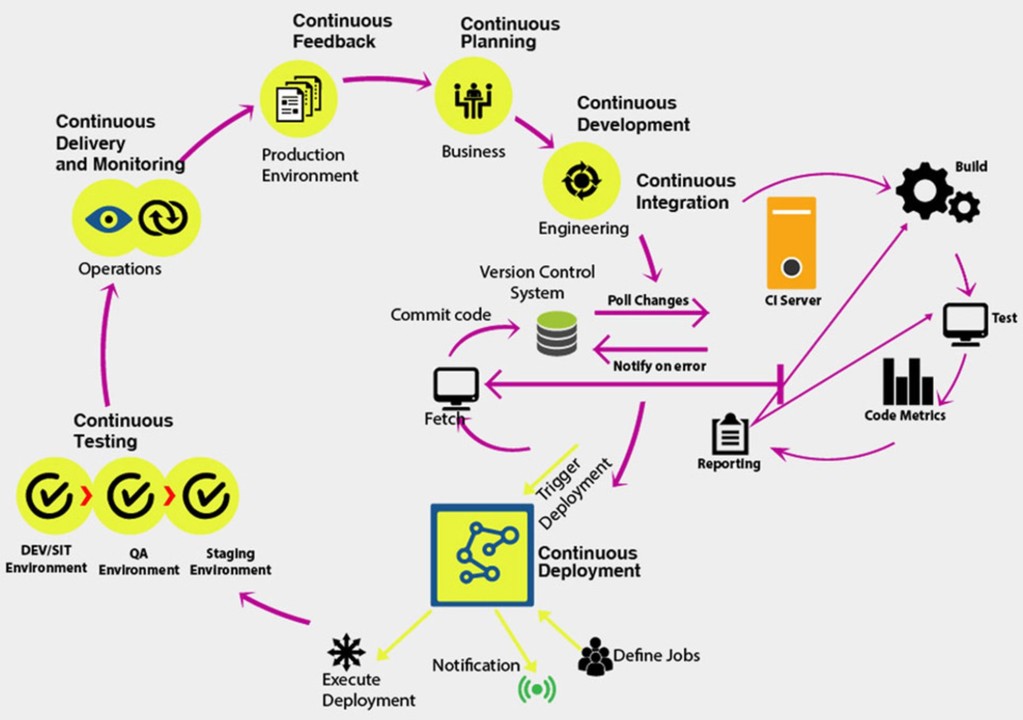Streamlining Development: Continuous Integration Tips for Efficient Coding
Continuous Integration (CI) is a software development practice that involves regularly integrating code changes into a shared repository. This process, when executed effectively, can enhance collaboration, reduce bugs, and ensure a more streamlined development workflow. Let’s explore essential Continuous Integration tips to optimize your coding practices.
Understand the Fundamentals of Continuous Integration
Before diving into specific tips, it’s crucial to grasp the fundamentals of Continuous Integration. CI involves automatically integrating code changes from multiple contributors into a shared repository multiple times a day. This frequent integration allows teams to detect and address issues early in the development process.
Automate Your Build Process
Automation is at the core of Continuous Integration. Automate your build process to compile code, run tests, and generate artifacts automatically. This ensures consistency and reliability in the build results. CI tools, such as Jenkins, Travis CI, or GitHub Actions, can be configured to handle these tasks seamlessly.
Run Comprehensive Automated Tests
An integral part of the CI process is running automated tests to validate the integrity of your codebase. Ensure that your test suite covers unit tests, integration tests, and any other relevant test cases. A comprehensive test suite provides confidence that the integrated code changes have not introduced regressions.
Create a Clean and Isolated Testing Environment
Maintain a clean and isolated testing environment for your CI builds. This helps in avoiding conflicts or discrepancies between different builds. Utilize containerization technologies like Docker to create reproducible and consistent testing environments for your CI processes.
Monitor Code Quality Metrics
Continuous Integration allows for the monitoring of code quality metrics over time. Integrate tools such as SonarQube or CodeClimate into your CI pipeline to analyze code quality, detect code smells, and ensure adherence to coding standards. Monitoring these metrics enables teams to proactively address code quality issues.
For an in-depth exploration of Continuous Integration tips, check out Continuous Integration Tips for Coding.
Implement Continuous Integration Security Scans
Security is a top priority in software development. Integrate security scans into your CI pipeline to identify vulnerabilities and potential security risks early in the development process. Tools like OWASP Dependency-Check or Snyk can automatically scan dependencies for known vulnerabilities.
Parallelize Build and Test Processes
Optimize your CI pipeline by parallelizing build and test processes. Breaking down tasks and running them concurrently can significantly reduce the overall build time. This is especially important as your project grows, ensuring quick feedback to developers and facilitating a faster development cycle.
Establish a Consistent Branching Strategy
Define a consistent branching strategy to guide code integration. Whether following a GitFlow model or another branching strategy, ensure that all team members are aligned on the workflow. A clear branching strategy streamlines the integration process and reduces the likelihood of conflicts.
Set Up Notifications and Alerts
Implement notifications and alerts to keep the team informed about the status of CI builds. Receive instant notifications on build failures or other issues. This proactive approach allows teams to address problems promptly, preventing the integration of faulty code into the shared repository.
Regularly Review and Improve CI Configuration
Continuous Integration is an evolving process. Regularly review and improve your CI configuration based on the evolving needs of your project. Embrace a culture of continuous improvement, where the CI pipeline is refined to accommodate new technologies, address bottlenecks, and enhance overall efficiency.
In conclusion, Continuous Integration is a powerful practice that can significantly impact the efficiency and reliability of your development process. By incorporating these Continuous Integration tips into your coding practices, you can streamline development, catch issues early, and foster a collaborative and responsive development environment.



![Average Renovation Costs in [Your Location] Average Renovation Costs in [Your Location]](https://images.unsplash.com/photo-1517103278237-421a1cb020fa?fm=jpg&q=60&w=3000&ixlib=rb-4.0.3&ixid=M3wxMjA3fDB8MHxzZWFyY2h8M3x8aG93JTIwbXVjaCUyMHJlbm92YXRpb24lMjBjb3N0fGVufDB8MHwwfHx8Mg%3D%3D)







